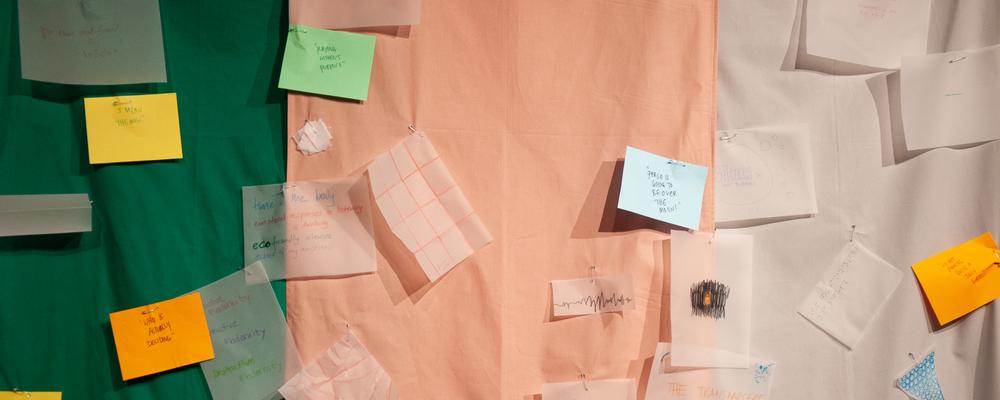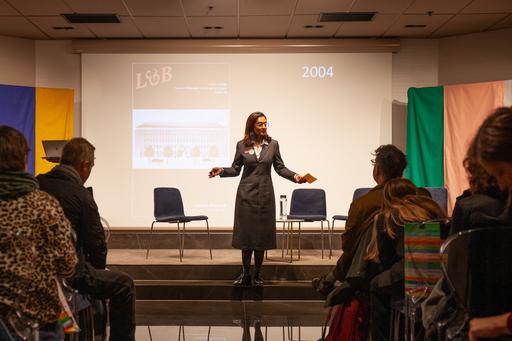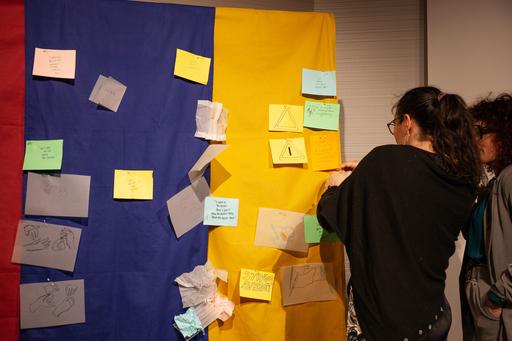
- Home
- News and events
- Find news
- PARSE Celebrates 10 Years
PARSE Celebrates 10 Years
The Artistic Faculty’s platform PARSE for artistic research, turns ten years in 2024. This was honoured by means of a two-day symposium where PARSE reflected on its history and fixed its gaze at the future.
PARSE (Platform for Artistic Research Sweden) is both a publishing platform and a biennial conference focused on artistic research. Since its inception, 18 issues of the PARSE Journal have been published, and PARSE has hosted five conferences.
The platform was started in 2014 and behind the initiative were the Artistic Faculty's then dean Ingrid Elam, Valand Academy's head of department Mick Wilson and research coordinator Johan Öberg.
“When the faculty was formed, money was allocated and invested in research by way of 42 doctoral students. At the time, there were very few in-house supervisors, so the faculty had to outsource doctoral supervision. Apart from the organ research, there was hardly any senior research. There were no research assistants or postdocs. Together Mick, Johan and I asked ourselves, “how do we build a research environment?” says Ingrid Elam.
The answer was to be able to publish internationally, and for that a contact network was needed. To build up a contact network, a conference was needed. In this way, the idea of PARSE as both a publishing platform and a conference was born. In 2013, an application for funds was submitted to the then vice-chancellor Pam Fredman, who granted the application.
Then the journal was started, with an advisory board containing some prominent names such as Bruno Latour and Barbara Czarniawska. PARSE published its first issue and hosted its first conference in 2015.
“It went surprisingly well. PARSE received attention and the conference was well attended. There was much to be proud of and much potential for further development.”
Ingrid Elam describes that it has been a strength for PARSE, and the Artistic Faculty, to be a part of the University of Gothenburg.
“Through this, we gained access to competence and resources that tend to be lacking at other smaller art schools. It has been a contributing factor to PARSE being able to have its continuity and keep evolving for ten years. PARSE was, and still is, a unique platform in Sweden and is internationally recognized.”
“The journal serves as a publishing platform and the conference is about bringing practitioners and scholars into conversation with each other on how artistic research can bridge disciplinary divisions,” says Jyoti Mistry, professor in film at HDK-Valand and editor-in-chief of PARSE.

Celebratory Symposium
To mark the 10-year anniversary of PARSE a symposium was held in Gothenburg in late April 2024. The two-day event invited previous issue editors, contributors, collaborators and managing editors from other publishing platforms to meet and reflect on previous issues, past conferences and their themes.
“We wanted both perspectives, of those who have been involved with PARSE from within the institution and outsider observations of how the platform has evolved over ten years. The first day of the symposium focused on the history and experiences of the initial years of developing the platform. On the second day, we invited Cecilia Roos and Jay Pather, as critical friends of PARSE, to share their perspective on the platform,” says Jyoti Mistry.
While giving room to discuss and assess the impact PARSE has had so far, the symposium also focused on the future, trying to envision PARSE in 2034.
“We do not want to get trapped in history. Instead, we wanted to bring people together and discuss where PARSE will need to go in the future especially given the potential with online publishing,” says Jyoti Mistry.
“It was exciting to have Cathryn Klasto and Lucy Cathcart Frödén to conduct the symposium workshop “Plural Slices.”. They represent the future of artistic research scholarship, and we wanted to be conscious to make space for the next generation of scholars, artists and practitioners. We found it important to recognize that that the responsibility for the future of PARSE lies in the hands of scholars outside of the current working group, and it is they who will take it into the next stage of artistic and creative development.”

New Means of Publishing Formats
An important part of the future for the PARSE journal is to recognize the need to be open to new means of publishing formats. While the first few issues were printed the journal is now exclusively digital. During the last year and a half, a more experimental approach to publishing has been taken and PARSE has frequently released podcasts, video material and slide shows.
In the future, Jyoti Mistry feels confident that PARSE will strengthen artistic research across several institutions in Sweden and continue to be a place where people come together to share and exchange their artistic practices and research and collaborate in publishing their research.
“The strength of PARSE has been its generosity and openness to collaboration, and listening to what practitioners, researchers and scholars have been saying."
“Other platforms were invited to the symposium, and we are always open to be in dialogue with them. We are not interested in gatekeeping but rather making the platform visible and accessible. Leading to 2034, PARSE will strengthen its international networks and secure greater collaborations across the Nordic countries.”
Henric Benesch, dean at the Artistic Faculty, feels that the symposium helped make clear that PARSE is in a good place.
“A lot of great things and a lot of small things have been achieved. There is a lot of experience to build upon and an acknowledgement that things change and that it is important for a new generation to set the agenda for what PARSE will become during the next 10 years. I look forward to participating in the continued journey!”